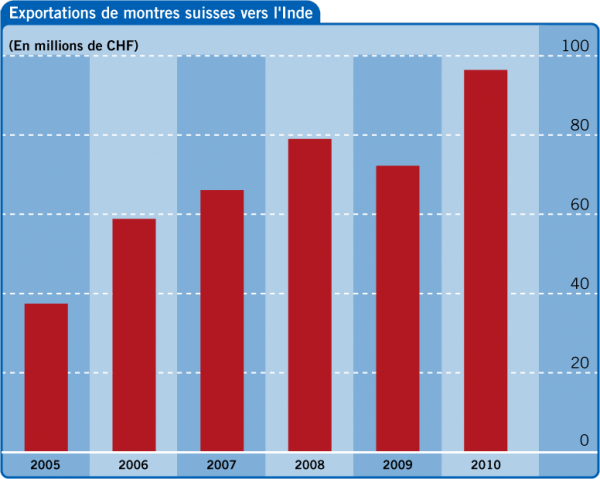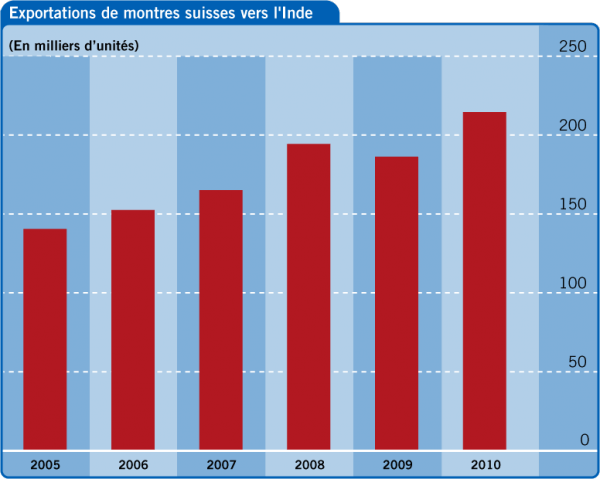Many of the top bosses at Baselworld concur that India is a market still in its infancy for Swiss watches, despite its billion-strong population. Much of the blame for this lies with prohibitive taxes and import restrictions. Although India lifted the last of its trade restrictions in 2002, and while it is in theory at least now a free market, the increase in exports, while real, is still some way off its full potential. From CHF 14 million in 1990, exports of Swiss watches to India climbed to CHF 21.9 million in 2000, and have surged since then: CHF 84 million in 2008, falling slightly to CHF 75 million in 2009 then rising again to CHF 101.3 million in 2010, a 35% increase in one year. Now India is just behind the Netherlands, with exports to the subcontinent increasing fivefold in ten years.
“The potential is there, even if this is still a relatively complicated market to manage,” explains Karl-Friedrich Scheufele, Co-president of Chopard, insisting that India will be one of the brand’s main priorities in the coming years. At La Montre Hermès, the firm has yet to begin in earnest its rollout in a market where, says CEO Luc Perramond, protectionist measures are still sizeable barriers. “India is China ten years ago,” he declares. Sign of the times? Thierry Stern, President of Patek Philippe, recently had to deal with an unusual request from an Indian customer who wanted to buy five hundred of the Genevan Manufacture’s watches as gifts for guests at a wedding he was attending!

The distribution headache
Brands must also solve the weighty problem of distribution and boutique networks. India doesn’t have the equivalent of Rue du Rhône in Geneva, Fifth Avenue in New York, or the Champs-Elysées in Paris. Most points of sale are inside shopping malls or luxury hotels, which inevitably limits development. The situation, however, is changing fast as new malls spring up across the country’s reasonably large cities.

For example, a year ago Vacheron Constantin cut the ribbon at its first store in India, in the luxurious DLF Emporio mall in New Delhi. Now affluent Indians no longer have to travel to Dubai for weekend shopping trips. At DLF Emporio, which styles itself “India’s finest luxury destination,” they’ll find all they want and more, as only the most exclusive brands are admitted. Previously, very high-end products could only be purchased from luxury hotels, such as the Taj Mahal Hotel in Bombay or the Oberoï in New Delhi. The more affordable brands have also made their move. Last year Longines, which is part of the Swatch Group, opened several shop-in-shops in selected cities, an opportunity for the brand’s shapely ambassadress Aishwarya Rai Bachchan to launch a new collection. CK Montres & Bijoux, also Swatch Group, is now represented by 120 retailers in India.







